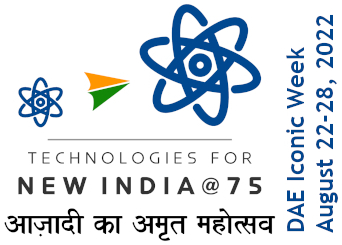Past Colloquia
| Title : |
UNRAVELLING THE ELECTRONIC STRUCTURE OF MATERIALS |
|
| Speaker | : | Sudipta Roy Barman, UGC-DAE Consortium for Scientific Research, Indore |
| Date | : | March 20, 2013 |
| Abstract | : |
The rapid development of synchrotron radiation sources around the world has proved to be of great advantage for the progress of science. After providing a general overview of the research activity of our group, in the first part of the talk, I will focus on our recent work on the bulk electronic structure of quasicrystals by hard x-ray photoelectron spectroscopy (HAXPES) using 6-8 keV synchrotron radiation. Quasicrystals have fascinated scientists from the time of their discovery. They have forbidden symmetry and exhibit remarkable physical properties such as high resistivity and low thermal conductivity. It is generally accepted that the stability of the quasicrystals arises from a Brillouin zone-Fermi surface interaction that induces a pseudogap at the Fermi level. However, in low energy x-ray photoemission such as ultra-violet photoemission, a Fermi edge was unambiguously observed in the valence band spectra. These studies were always conducted under surface-sensitive conditions and it might be argued that a metallic surface electronic structure hides the true bulk electronic structure. Bulk sensitive HAXPES has been use by us to establish the existence of a pseudogap at the Fermi level in a range of quasicrystalline solids such as icosahedral (i)-Al-Pd-Mn and i-Al-Cu-Fe, which explains the mechanism of the formation of their aperiodic structure. By using a detailed curve fitting scheme we find that, compared to i-Al-Pd-Mn, the pseudogap is fully formed in i-Al-Cu-Fe. This is in agreement with the transport studies that have shown that i-Al-Cu-Fe is close to a metal-insulator phase boundary. In the second part of the talk, I will dwell on an interesting embedded nano-system: rare gas bubbles in aluminium. The rare gas bubbles are overpressurized and are reported to occur in even solid state at room temperature in the Al lattice. The bubble radii have been reported to vary from fraction of a nm to less than 10 nm. As a consequence of their nanometer size, interesting phenomena are observed from photoemission such as dynamic screening of the Ar 2p or Ne 1s core-hole by the aluminum conduction electrons. This is manifest as increase of the core-level binding energy with the bubble size. Another exciting observation is the presence of aluminum bulk and surface plasmon excitations in the core-level spectra of the rare gas. Our preliminary experiments using synchrotron radiation show the promise of obtaining more information on these embedded nano-systems. |




